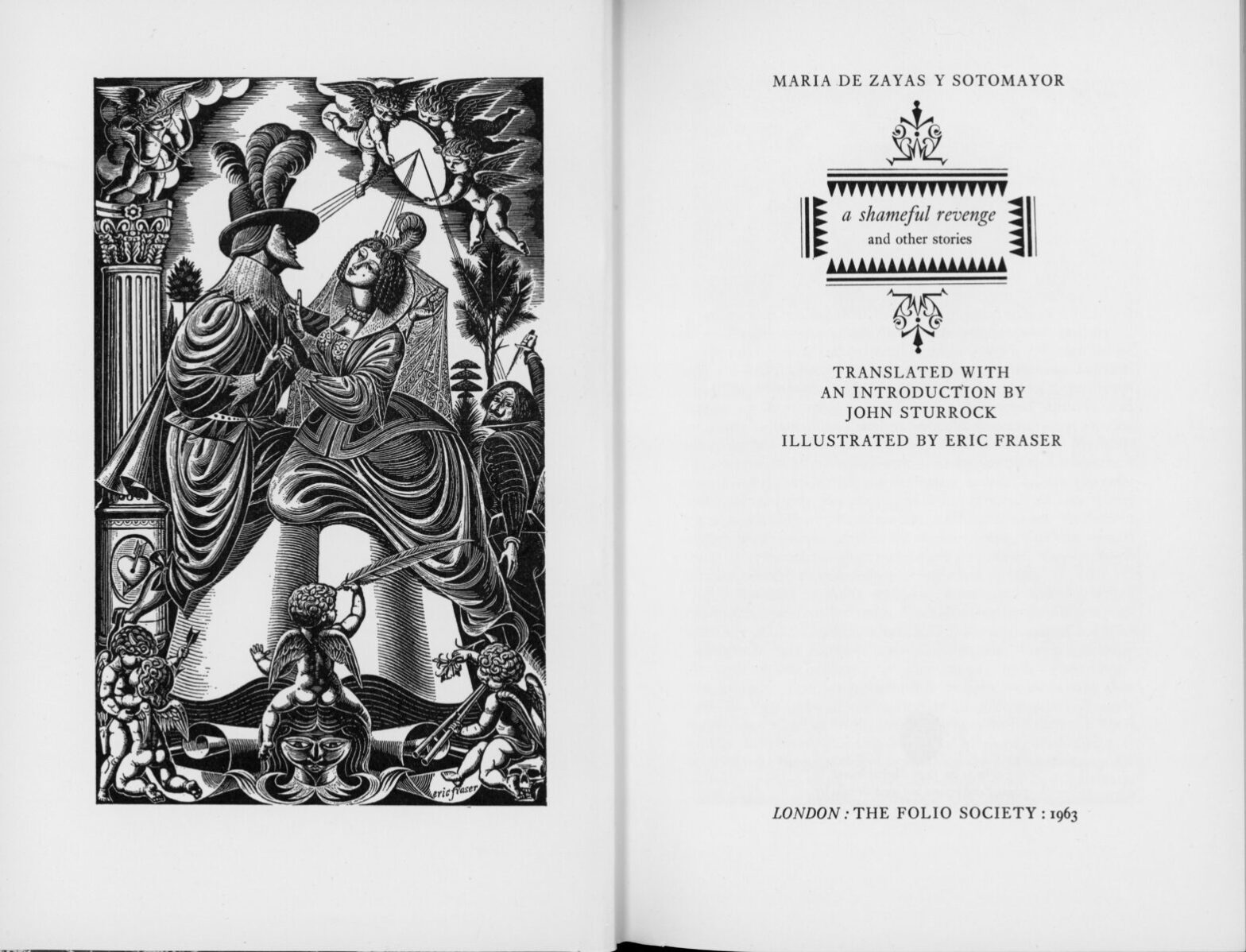On another day of relentless rain I stayed indoors and occupied myself with reading, including this third story in my Folio Society Maria de Zayas collection.
De Zayas writes that it is not acceptable for a man of good society and wealth to marry a woman, even of the same background, without similar riches; it is, however, satisfactory to win such a prey by any means possible as long as the affair is kept secret in order to preserve her reputation and his honour. In such a situation “the moment he saw her, or so he maintained, he lost his heart to her. (The worst thing about men to my mind [says the author] is that they profess to feel much more than they really do.)”
Persistence and false promises are preferable to force, although any method may be employed to break down honourable resistance to a dishonourable suit. Once satisfied the lover eventually tires of his love. When “unable to consummate his lust [he] had been in despair…now he regretted it. And the worst of it is that there are many men like him; there always have been and there still are today. There are many [such women] too, and neither one nor the other regret what they are doing until they have plunged into the same abyss as engulfed all their predecessors.”
“Who but a man could be guilty of such a betrayal!” Nevertheless our author says “You will surely allow me, gentlemen, in this tale of mine about a man’s deceit, to express my admiration for a woman’s wrath, for you will recognise that a woman’s fury often springs from a man’s duplicity.” Our author would have agreed with William Congreve that “Hell hath no fury than a woman scorned.”
Revenge is acceptable if in defence of honour; one of the schemes in this story is less shameful than the other.
As so often in these stories a shamed woman has recourse to “taking the veil” in order to preserve her life. Shakespeare’s Hamlet enjoins Ophelia to “get thee to a nunnery”.

Here is Eric Fraser’s engraving for this story.
This evening I dined on Jackie’s penne pasta arrabbiata sprinkled with Parmesan cheese, while she opted for a plateful of vegetables, including carrots, cauliflower, green and runner beans. I drank more of the Fleurie.

And I always thought that a nunnery in those terms was a house of Ill repute which is why the Madams were also referred to Abbesses. Another fine review with a wonderful illustration.
I think Shakespeare means both things, playing with the double meaning.
Yes, indeed
Thank you very much, Pat
It seems like these stories give a good picture of the time period from a woman’s perspective.
They do. I want to say we are not all like that. Thanks very much, Merril
You’re welcome, Derrick. We seem to be moving backwards now, but I think the author would have done very well if she lived now.
I’m sure
Intense! And the illustrations match the story in intensity. Interesting to think of how things have changed back when the stories were written to now, but also when we were young to now.
Good points, Laurie. Thank you very much
Italian with Parmesan cheese, so delicious! 😋
The human intrigue behind these sorts of stories make for interesting reading, Derrick …
Thank you very much, Ivor
Another intriguing story, Derrick. What a miserable place the nunnery must’ve been in those days!
Indeed. Thank you very much, Rosaliene
I think I would find these stories about the worst of human nature upsetting to read.
I’m not surprised, Liz. Thanks very much
You’re welcome, Derrick.
Though it may be hard to read, I admire the authors for telling the truth.
Thank you so much, JoAnna
That does paint and almost gothic feel to that nunnery. Again the art work is so wonderful.
Thank you so much, Gary
A story to get a woman’s blood pressure up! Lol You intrigued me with Jackies arrabbiata pasta, I will have to try that!
Thank you very much, Diane. We will have more tonight
Apt title.
Thank you very much, Rupali
I agree with Liz, I would be the same.
Sounds like an intense, emotion-evoking read!
(((HUGS))) ❤️❤️
Sure is, Carolyn XX
A fine review, Derrick. The book and the engraving are very intense and depict a very dark side of life.
Thank you very much, Eugi
You’re welcome, Derrick.
Subject matter disturbing, but I enjoyed your review, Derrick. The illustrations are well done, too.
Thank you very much, Lavinia